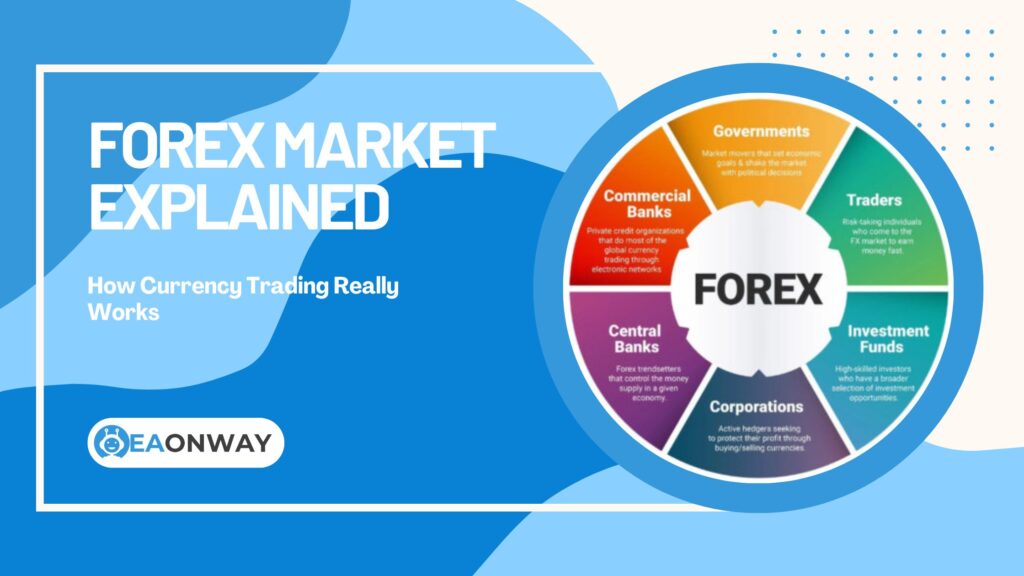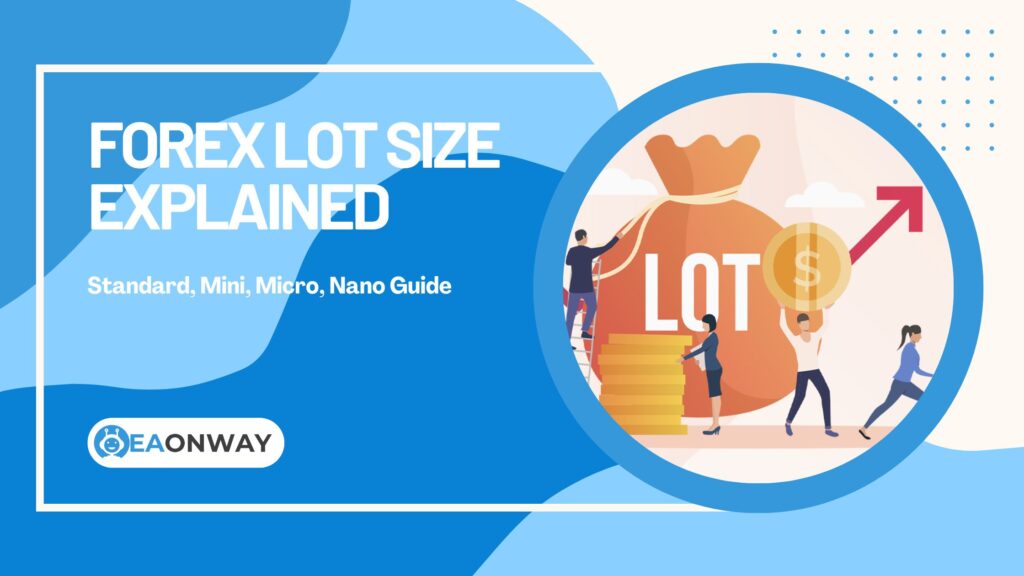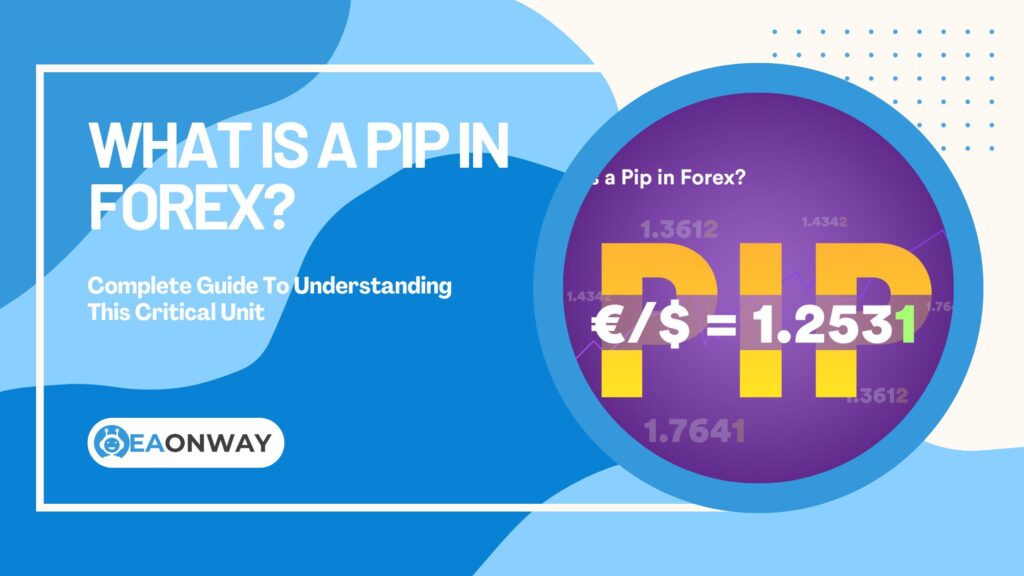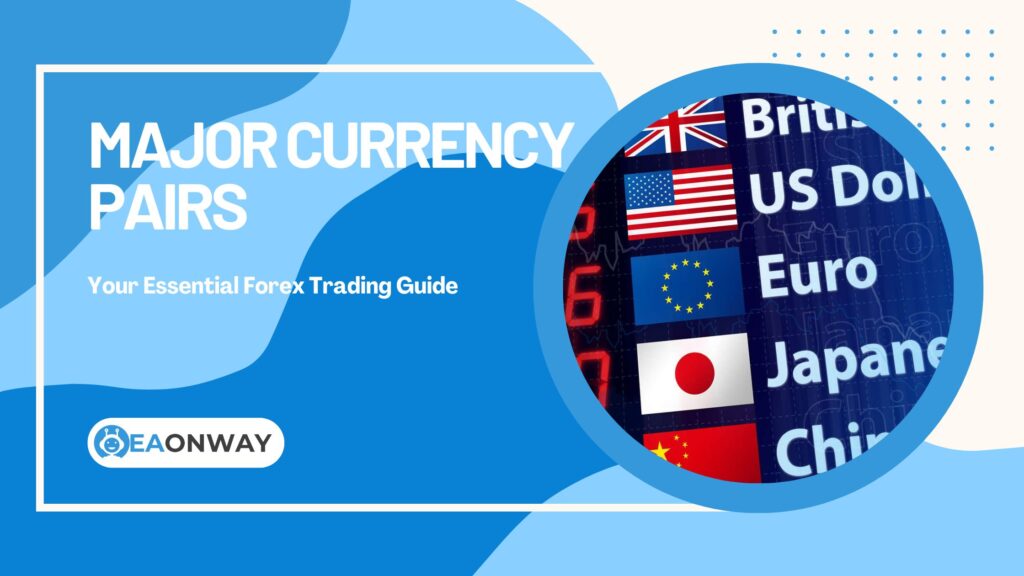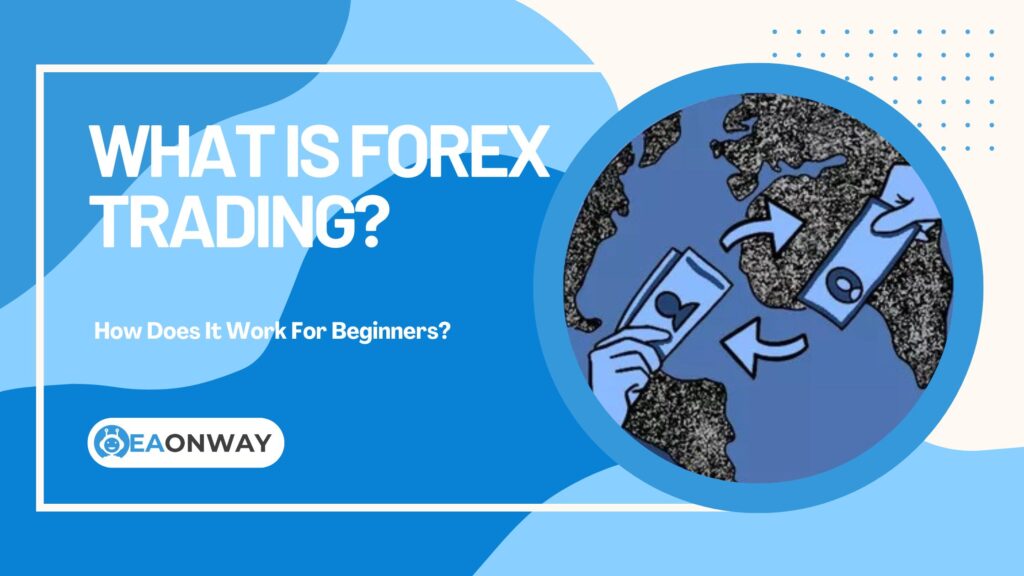Forex Margin Explained: Understanding Margin Calls, Required & Free Margin
Forex margin is the collateral required by brokers to open and maintain leveraged trading positions, functioning as a security deposit that allows traders to control larger positions than their account balance would normally permit. Have you ever wondered how traders can control significant currency positions with relatively small amounts of capital? The answer lies in leverage and its inseparable companion: margin. While this mechanism opens doors to potential opportunities, it simultaneously magnifies risks, making a thorough understanding essential before entering the market.
This article delves deep into the world of Forex margin trading. We’ll break down exactly what margin is, how it functions alongside leverage, and clarify the critical distinctions between required margin, free margin, equity, and margin level. Crucially, we will explore the mechanics and implications of a margin call, explain the stop out level, and provide practical insights into managing margin effectively to mitigate substantial risks. Our goal is to equip you with the knowledge needed to approach leveraged trading with awareness and caution, avoiding the common pitfalls and unrealistic expectations often associated with Forex trading.
Key Concepts at a Glance
Here’s a quick summary of the essential margin-related terms we’ll explore in detail:
- Forex Margin: Not a fee or cost, but a good faith deposit or collateral required by your broker to open and maintain leveraged trading positions.
- Leverage: A tool provided by brokers allowing you to control a larger position size than your deposited capital would normally permit. It amplifies both potential profits and potential losses.
- Required Margin (Used Margin): The specific amount of your account equity set aside and locked by the broker to keep your current open positions active.
- Free Margin: The amount of money in your trading account available to open new positions or absorb losses from existing ones. It’s your equity minus the required margin.
- Equity: The real-time value of your trading account, calculated as your account balance plus or minus any unrealized profits or losses from open positions.
- Margin Level (%): A crucial health indicator of your account, calculated as
(Equity / Required Margin) * 100%. A high percentage indicates more buffer; a low percentage signals increasing risk. - Margin Call: A warning from your broker when your Margin Level drops below a predefined threshold, indicating your account equity is insufficient to support your open positions. It requires action (depositing funds or closing trades) to avoid forced closure.
- Stop Out Level: A lower, critical Margin Level percentage set by the broker. If your account hits this level, the broker automatically starts closing your positions (usually the largest losing ones first) to prevent further losses and protect both you and the broker.
What is Margin in Forex Trading?
Navigating the Forex market often involves terms that can seem complex initially. One of the most critical is ‘margin’. Understanding it thoroughly is essential for responsible trading and risk management.
Defining Forex Margin: The Basics
What exactly is Forex margin? Forex margin is the amount of money a trader needs to deposit with their broker as collateral to open and maintain a leveraged trading position. It’s crucial to understand that margin is not a transaction fee or cost; rather, it’s a portion of your account equity set aside as a good faith deposit. Think of it like a down payment required when securing a loan; it demonstrates you have sufficient skin in the game to cover potential initial losses. This deposit allows traders to utilize leverage effectively while providing brokers with protection against client losses.
How Does Forex Margin Work? The Role of Leverage
How does margin function in practice? Margin works hand-in-hand with leverage. Leverage allows you to control a much larger position size in the Forex market than your actual account balance would typically allow. For instance, with a leverage ratio of 50:1 (common for major currency pairs), for every $1 of margin you put up, you can control $50 worth of currency.
The margin required is calculated based on the full size of the position you wish to control, divided by the leverage offered by your broker. If you want to open a $100,000 position (1 standard lot) with 50:1 leverage, your required margin would be $2,000 ($100,000 ÷ 50). This mechanism enables participation in potentially significant market movements with less initial capital, but it fundamentally increases risk exposure. The lower the leverage, the higher the required margin for the same position size, and vice-versa.
For major currency pairs like EUR/USD, brokers typically require a margin of around 2%, which translates to maximum leverage of 50:1. However, in the European Union, regulatory bodies like ESMA have limited retail trader leverage to 30:1 for major currency pairs as a protective measure (Source: ESMA Investor Protection Measures).
Why Do Brokers Require Margin?
What purpose does margin serve for the broker? Brokers require margin primarily as a safeguard against potential trading losses incurred by their clients. Because leverage amplifies losses just as it does profits, there’s a risk that a trader’s losses could exceed their deposited capital. The margin acts as a buffer, ensuring that there are funds available in the trader’s account to cover at least a portion of these potential losses.
This protects the broker from liability for client debts and helps maintain the stability of the trading environment. While margin aims to prevent negative balances, extreme market volatility can sometimes lead to losses exceeding the deposited margin, highlighting the inherent risks involved. Regulations in many jurisdictions also mandate minimum margin requirements to protect retail traders from excessive leverage risks.
Understanding Key Margin Components
To effectively manage your trading account and risk, you need to understand several interconnected components related to margin. These metrics are typically visible on your trading platform and should be monitored regularly.
What is Required Margin (Used Margin)?
What does Required Margin signify? Required Margin, often called Used Margin, is the total amount of your account funds currently locked up by your broker to keep all your open trading positions active. Each time you open a new trade, a specific amount of margin is calculated and set aside for that position. The sum of the margin required for all your open trades constitutes the total Required Margin.
This money is essentially frozen and cannot be used to open new positions or withdrawn until the corresponding trades are closed. It directly reflects the total size of your market exposure relative to the leverage you are using. Required margin increases as you open more positions or when you increase the size of existing positions.
How Do You Calculate Required Margin?
How is the Required Margin amount determined? The calculation for Required Margin depends on several factors: the currency pair being traded, the size of the trade (e.g., standard lots, mini lots, micro lots), the leverage offered by your broker, and the current market price of the currency pair.
A common simplified formula is:Required Margin = (Current Market Price * Trade Size in Units) / Leverage Level
- Example: Suppose you want to trade 1 standard lot (100,000 units) of EUR/USD. The current market price is 1.0800. Your account leverage is 50:1.
Required Margin = (1.0800 * 100,000) / 50Required Margin = 108,000 / 50Required Margin = $2,160
In this case, $2,160 of your account equity would be allocated as Required Margin to open and maintain this position. Note that if your account currency is different from the base currency of the pair (EUR in this example), a conversion rate will also apply, which most platforms handle automatically. Always check your broker’s specific calculation method as formulas may vary slightly between brokers.
What is Free Margin?
What is Free Margin and why is it important? Free Margin represents the difference between your account’s Equity and the Required Margin currently being used for open positions. Essentially, it’s the money available in your trading account that you can use to place new trades or that can absorb floating losses from your existing trades before triggering a margin call.
Monitoring your Free Margin is crucial; if it dwindles to zero or below, you won’t be able to open any new positions, and you are dangerously close to potentially facing a margin call. A healthy amount of Free Margin provides a buffer against market fluctuations and allows you flexibility in your trading decisions.
How Do You Calculate Free Margin?
How can you determine your Free Margin? Calculating Free Margin is straightforward once you know your Equity and Required Margin. The formula is simply:
Free Margin = Equity - Required Margin
- Example: Continuing the previous scenario, let’s say your account Equity (Balance +/- Floating Profit/Loss) is currently $5,000. You have one open position requiring $2,160 in margin.
Free Margin = $5,000 (Equity) - $2,160 (Required Margin)Free Margin = $2,840
This $2,840 is the amount available to support further trading activity or cover potential losses on the open EUR/USD position. If this number decreases due to mounting losses, your trading capabilities become increasingly restricted.
What is Equity in Forex?
What does Equity represent in your trading account? Equity is perhaps the most crucial real-time measure of your account’s value. It represents your account balance plus or minus the profit or loss from all your currently open positions (floating P/L). Unlike your balance, which only changes when positions are closed or funds are deposited/withdrawn, Equity fluctuates constantly as the market prices of your open positions move.
Equity = Account Balance + Floating Profits - Floating Losses
If your open trades are profitable, your Equity will be higher than your balance. If they are in a loss, your Equity will be lower. Margin calculations, particularly Margin Level, are based on Equity, not just the static account balance. This is why monitoring equity is essential – it represents your real-time account value and directly impacts your margin status.
Understanding Margin Level (%)
What is the Margin Level and why monitor it? The Margin Level is a critical percentage that indicates the health of your trading account relative to the margin being used. It shows how much of a buffer (based on your Equity) you have compared to the margin required for your open positions. It’s calculated as:
Margin Level = (Equity / Required Margin) * 100%
- Example: Using our previous figures: Equity is $5,000 and Required Margin is $2,160.
Margin Level = ($5,000 / $2,160) * 100%Margin Level ≈ 231%
A higher Margin Level percentage is generally safer, indicating ample cushion. As your Equity decreases (due to losses) or your Required Margin increases (due to opening more trades), the Margin Level will fall. Brokers use this percentage to determine when to issue a margin call or initiate a stop out. Most brokers set their margin call level around 100% and stop out level around 50%, though these percentages can vary significantly between brokers.
The Dreaded Margin Call Explained
One of the most feared events for leveraged traders is the margin call. Understanding what it is, why it happens, and its consequences is vital for survival in the Forex market.
What is a Margin Call in Forex?
What exactly happens during a margin call? A margin call is essentially a warning notification from your Forex broker informing you that your account’s Margin Level has fallen below a specific, predetermined threshold set by the broker (the “Margin Call Level”). This level is typically expressed as a percentage (e.g., 100%, 80%, 50% – it varies significantly between brokers).
It signifies that your account Equity is becoming insufficient to support your open leveraged positions due to accumulating losses. It is not yet the forced closure of your trades, but rather a critical alert demanding immediate attention. Many modern brokers no longer make actual “calls” but instead send automated notifications through their trading platforms, via email, or SMS.
What Triggers a Margin Call?
Why do margin calls occur? The primary trigger for a margin call is a decline in your account Equity caused by unrealized losses on your open positions. As losses mount, your Equity decreases. Since Required Margin remains constant for existing positions (unless you add more trades), the ratio of Equity to Required Margin (the Margin Level percentage) drops. When this percentage hits the broker’s Margin Call Level, the alert is triggered. Factors contributing to this include:
- Excessive Leverage: Using very high leverage magnifies losses quickly.
- Poor Risk Management: Not using stop-losses or risking too large a percentage of capital per trade.
- Holding Losing Positions Too Long: Allowing losses to accumulate without cutting them.
- Over-Trading: Opening too many positions simultaneously, increasing the total Required Margin and exposure.
- Sudden Market Volatility: Sharp, unexpected market moves against your positions, which are particularly common during major economic releases or geopolitical events.
What Happens During a Margin Call?
What are your options when you receive a margin call? When you receive a margin call notification (usually via the trading platform, email, or SMS), you typically have two main options to bring your Margin Level back above the required threshold:
- Deposit Additional Funds: Adding more capital to your account increases your Equity, thereby boosting your Margin Level.
- Close Some or All Open Positions: Closing positions, especially the losing ones, reduces your Required Margin. This reduction, combined with realizing the loss (which adjusts your balance and equity), will typically increase the Margin Level percentage (as the denominator in the calculation decreases significantly).
If you fail to take corrective action promptly, and your Margin Level continues to deteriorate, you risk reaching the Stop Out Level where automatic liquidation begins.
Margin Call Example Scenarios
Let’s illustrate with numbers. Assume:
- Account Balance: $2,000
- Leverage: 50:1
- Margin Call Level: 100%
- Stop Out Level: 50%
- You open a trade requiring $1,000 in margin (Required Margin = $1,000).
- Initially: Equity = $2,000, Required Margin = $1,000. Margin Level = ($2,000 / $1,000) * 100% = 200%.
Now, the market moves against you, creating a floating loss of $1,000.
- New Equity = $2,000 (Balance) – $1,000 (Floating Loss) = $1,000.
- Required Margin is still $1,000.
- New Margin Level = ($1,000 / $1,000) * 100% = 100%.
At this point, your Margin Level hits the 100% Margin Call Level. Your broker issues a margin call. You need to either deposit funds or start closing positions. If you do nothing and the loss increases further, say to $1,500:
- New Equity = $2,000 – $1,500 = $500.
- Required Margin = $1,000.
- New Margin Level = ($500 / $1,000) * 100% = 50%.
Now your Margin Level has hit the 50% Stop Out Level, and automatic liquidation begins.
Understanding the Stop Out Level
What is the Stop Out Level and how does it differ from a Margin Call? The Stop Out Level is a secondary, lower Margin Level threshold set by your broker. It represents the point of no return where intervention becomes automatic. If your Margin Level falls to the Stop Out Level (e.g., 50%, 30%, 20% – again, broker-dependent), your broker will begin to automatically close your open positions without further warning.
This is a forced liquidation process designed to prevent your account equity from falling further, potentially into a negative balance (though negative balance protection policies vary). Brokers typically start by closing the position with the largest floating loss first, continuing until the Margin Level rises back above the Stop Out Level. This is a protective mechanism for both the trader (preventing potentially larger debts) and the broker (reducing their counterparty risk).
Managing Margin and Avoiding Margin Calls
Understanding margin is only half the battle; actively managing it is key to long-term trading sustainability. Margin calls are preventable with disciplined risk management strategies.
Why is Understanding Margin Crucial for Risk Management?
How does margin knowledge impact risk control? Understanding margin is absolutely fundamental to effective risk management in leveraged Forex trading. It directly connects leverage, position sizing, and potential losses. Without grasping how margin works, traders might inadvertently use excessive leverage, take on positions too large for their account size, and fail to appreciate how quickly losses can deplete their equity, leading directly to margin calls and significant capital loss. A clear understanding allows you to:
- Choose appropriate leverage levels based on your experience and risk tolerance.
- Calculate correct position sizes based on your risk parameters.
- Monitor your account health (Margin Level, Free Margin) proactively.
- Set realistic stop-losses to limit potential drawdowns before they threaten your margin levels.
- Avoid the “gambler’s mindset” often encouraged by high leverage.
- Develop a sustainable trading approach focused on capital preservation.
Practical Tips for Avoiding Margin Calls
What steps can traders take to prevent margin calls? Avoiding margin calls primarily involves disciplined trading practices and robust risk control:
- Use Leverage Wisely: Avoid using the maximum leverage offered by your broker just because it’s available. Lower leverage means higher required margin per trade but reduces the amplification of losses. European regulators, like ESMA, have imposed leverage limits on CFDs for retail clients precisely due to the associated risks, capping major currency pairs at 30:1 leverage (Source: ESMA Investor Protection Measures). Choose a level appropriate for your strategy and risk tolerance.
- Implement Strict Risk Management: Always use stop-loss orders on every trade to define your maximum acceptable loss per position. Adhere to rules like risking only 1-2% of your trading capital on any single trade.
- Calculate Position Size Correctly: Base your position size on your stop-loss distance and the percentage of capital you’re willing to risk, not just on the minimum margin requirement.
- Avoid Over-Trading: Opening too many positions simultaneously increases your total Required Margin and overall market exposure, making your account more sensitive to adverse moves.
- Monitor Your Account Metrics: Regularly check your Equity, Free Margin, and Margin Level, especially during volatile market conditions or when holding multiple positions.
- Know Your Broker’s Policies: Understand your specific broker’s Margin Call Level and Stop Out Level percentages. These can vary significantly between providers.
- Maintain Sufficient Capital Buffer: Ensure your account is adequately capitalized for the size and number of trades you intend to take. A good practice is maintaining Free Margin of at least 50% of your Equity.
- Use Margin Calculators: Many brokers provide margin calculators that allow you to determine the exact margin required before opening a position.
The Relationship Between Leverage and Margin Risk
How does leverage directly influence margin risk? There’s an inverse relationship between leverage and required margin, but a direct relationship between leverage and risk. Higher leverage decreases the amount of required margin needed to open a specific position size, making it seem cheaper or easier to control large positions. However, this very amplification means that smaller adverse price movements result in much larger floating losses relative to your equity.
This rapidly depletes your Free Margin and Equity, drastically increasing the likelihood of hitting the Margin Call and Stop Out levels. While 50:1 leverage means you only need $2,000 margin for a $100,000 position, a mere 2% move against you ($2,000 loss) could trigger a margin call if your starting equity wasn’t sufficiently large. High leverage demands extremely tight risk control and is often unsuitable for beginners.
For perspective on leverage risk, consider that even professional fund managers typically use much lower effective leverage than what retail Forex brokers offer, and they still consider their strategies risky. This highlights why regulatory bodies worldwide have increasingly restricted maximum leverage available to retail traders.
Final Thoughts
Margin is an integral part of the modern Forex trading landscape, enabling participation with less upfront capital through leverage. However, it’s a double-edged sword that demands respect and understanding. Grasping the mechanics of required margin, free margin, equity, margin level, margin calls, and stop outs is not optional – it’s essential for survival in leveraged markets. These concepts are deeply intertwined with risk management.
The allure of controlling large sums with small deposits via high leverage is strong, particularly for those new to Forex or seeking quick profits. However, this path is fraught with peril. The key takeaway should be caution. Prioritize education, develop a solid trading plan with strict risk management rules, use leverage judiciously, and always monitor your account metrics closely.
Approaching Forex trading with realistic expectations and a focus on capital preservation, rather than solely on potential profits, is crucial for navigating the complexities of margin and leverage successfully. Remember that professional traders often succeed not by maximizing profit on individual trades, but by effectively managing risk across their entire portfolio to ensure longevity in the markets.
Important Risk Warning
Disclaimer: The information provided in this article is for educational purposes only and should not be considered financial or investment advice. Forex trading, particularly when using margin and leverage, involves a substantial risk of loss and may not be suitable for all investors. High leverage can work against you as well as for you, magnifying both potential profits and potential losses.
Before deciding to trade Forex, you should carefully consider your investment objectives, level of experience, and risk appetite. There is a possibility that you could sustain a loss of some or all of your initial investment and therefore you should not invest money that you cannot afford to lose. Past performance is not indicative of future results. Always seek advice from an independent financial advisor if you have any doubts. EaOnWay.com does not provide investment advice or recommendations.

